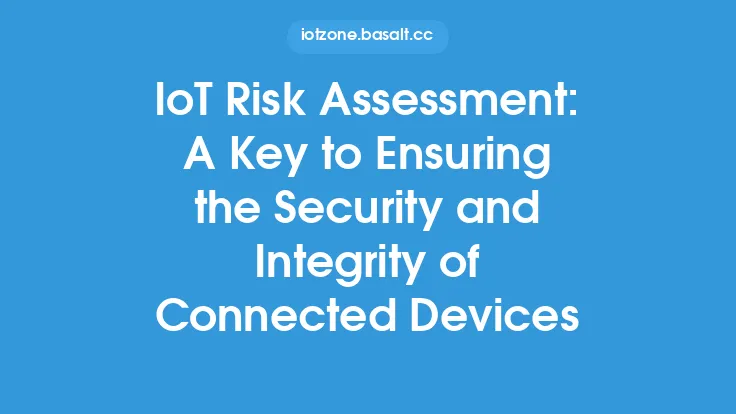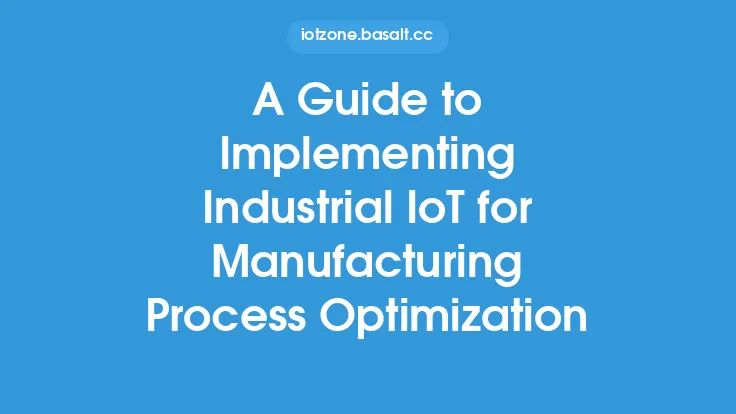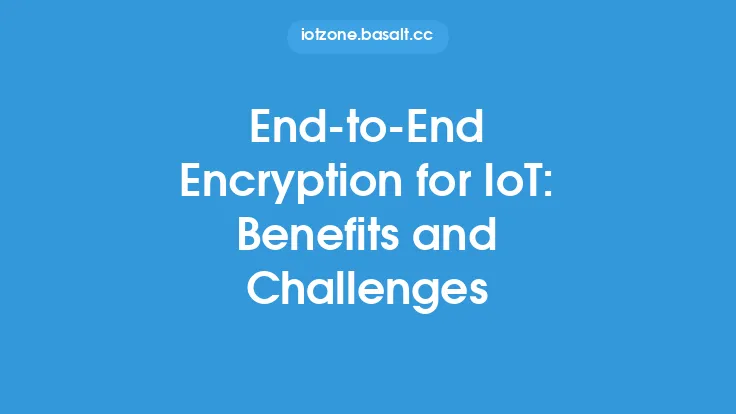The increasing number of Internet of Things (IoT) devices has led to a significant rise in the potential attack surface for cyber threats. As IoT devices become more pervasive in various industries, including healthcare, finance, and transportation, the need for effective vulnerability management has become a critical concern. Vulnerability management for IoT is a systematic approach to identifying, classifying, prioritizing, and remediating vulnerabilities in IoT devices and systems. This process is essential to preventing cyber attacks and ensuring the security and integrity of IoT ecosystems.
Introduction to Vulnerability Management in IoT
Vulnerability management in IoT involves a comprehensive approach to managing vulnerabilities in IoT devices, networks, and systems. This includes identifying potential vulnerabilities, assessing the risk associated with each vulnerability, and prioritizing remediation efforts. The goal of vulnerability management is to reduce the attack surface of IoT devices and prevent cyber attacks. Effective vulnerability management requires a deep understanding of IoT devices, networks, and systems, as well as the potential vulnerabilities that can be exploited by attackers.
Key Components of Vulnerability Management for IoT
There are several key components of vulnerability management for IoT, including:
- Vulnerability Identification: This involves identifying potential vulnerabilities in IoT devices, networks, and systems. This can be done through vulnerability scanning, penetration testing, and other forms of security testing.
- Vulnerability Classification: Once vulnerabilities have been identified, they must be classified based on their severity and potential impact. This helps to prioritize remediation efforts and ensure that the most critical vulnerabilities are addressed first.
- Vulnerability Prioritization: Vulnerabilities must be prioritized based on their severity, potential impact, and likelihood of exploitation. This helps to ensure that remediation efforts are focused on the most critical vulnerabilities.
- Vulnerability Remediation: This involves taking steps to remediate identified vulnerabilities, such as applying patches, updating software, or implementing other forms of mitigation.
- Continuous Monitoring: IoT devices and systems must be continuously monitored for new vulnerabilities and potential security threats.
Technical Aspects of Vulnerability Management for IoT
From a technical perspective, vulnerability management for IoT involves a range of activities, including:
- Network Segmentation: IoT devices should be segmented into separate networks to prevent lateral movement in the event of a security breach.
- Encryption: Data transmitted by IoT devices should be encrypted to prevent interception and exploitation.
- Secure Coding Practices: IoT device manufacturers should follow secure coding practices to prevent vulnerabilities in device software.
- Firmware Updates: IoT devices should be designed to receive regular firmware updates to ensure that vulnerabilities are patched and security features are updated.
- Intrusion Detection and Prevention Systems: IoT networks should be protected by intrusion detection and prevention systems to detect and prevent potential security threats.
Benefits of Effective Vulnerability Management for IoT
Effective vulnerability management for IoT provides a range of benefits, including:
- Reduced Risk of Cyber Attacks: By identifying and remediating vulnerabilities, IoT devices and systems can be protected from cyber attacks.
- Improved Security Posture: Vulnerability management helps to improve the overall security posture of IoT devices and systems.
- Compliance with Regulatory Requirements: Effective vulnerability management can help IoT device manufacturers and users comply with regulatory requirements and industry standards.
- Protection of Sensitive Data: Vulnerability management helps to protect sensitive data transmitted and stored by IoT devices.
- Reduced Downtime and Disruption: By identifying and remediating vulnerabilities, IoT devices and systems can be protected from downtime and disruption caused by cyber attacks.
Challenges and Limitations of Vulnerability Management for IoT
Despite the importance of vulnerability management for IoT, there are several challenges and limitations, including:
- Complexity of IoT Devices and Systems: IoT devices and systems can be complex and difficult to secure, making vulnerability management a challenging task.
- Limited Resources: Small and medium-sized businesses may not have the resources or expertise to implement effective vulnerability management.
- Evolving Nature of Cyber Threats: Cyber threats are constantly evolving, making it essential to stay up-to-date with the latest vulnerabilities and security threats.
- Limited Visibility and Control: IoT devices and systems can be difficult to monitor and control, making it challenging to identify and remediate vulnerabilities.
- Balancing Security with Convenience: Vulnerability management must balance security with convenience and usability, as overly restrictive security measures can limit the functionality of IoT devices.
Best Practices for Implementing Vulnerability Management for IoT
To implement effective vulnerability management for IoT, the following best practices should be followed:
- Conduct Regular Vulnerability Scans: Regular vulnerability scans should be conducted to identify potential vulnerabilities in IoT devices and systems.
- Implement a Vulnerability Management Program: A vulnerability management program should be implemented to identify, classify, prioritize, and remediate vulnerabilities.
- Use Secure Coding Practices: IoT device manufacturers should use secure coding practices to prevent vulnerabilities in device software.
- Implement Network Segmentation: IoT devices should be segmented into separate networks to prevent lateral movement in the event of a security breach.
- Provide Regular Firmware Updates: IoT devices should be designed to receive regular firmware updates to ensure that vulnerabilities are patched and security features are updated.
Conclusion
Vulnerability management is a critical component of IoT security, and it is essential to preventing cyber attacks and ensuring the security and integrity of IoT ecosystems. By understanding the key components of vulnerability management, technical aspects, benefits, challenges, and best practices, IoT device manufacturers and users can implement effective vulnerability management programs to protect their devices and systems from cyber threats. As the IoT continues to evolve and grow, the importance of vulnerability management will only continue to increase, making it essential to stay up-to-date with the latest vulnerabilities, security threats, and best practices.





